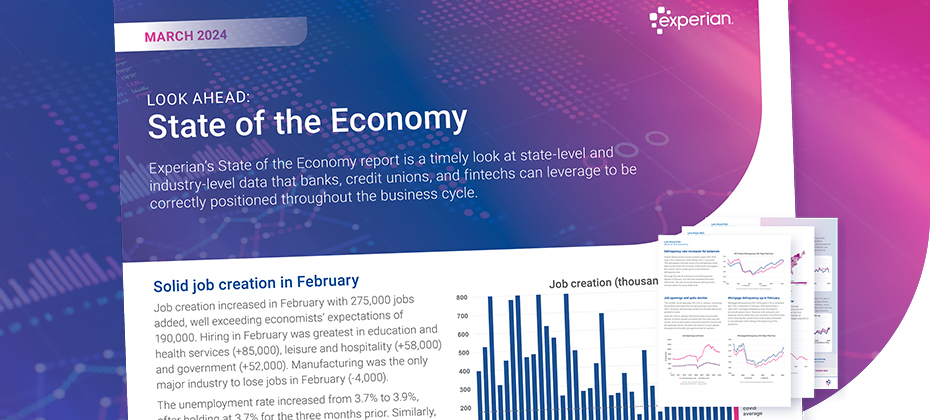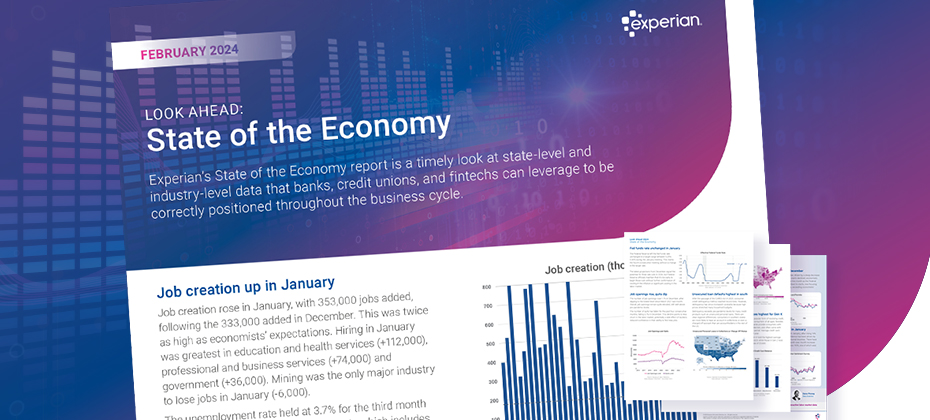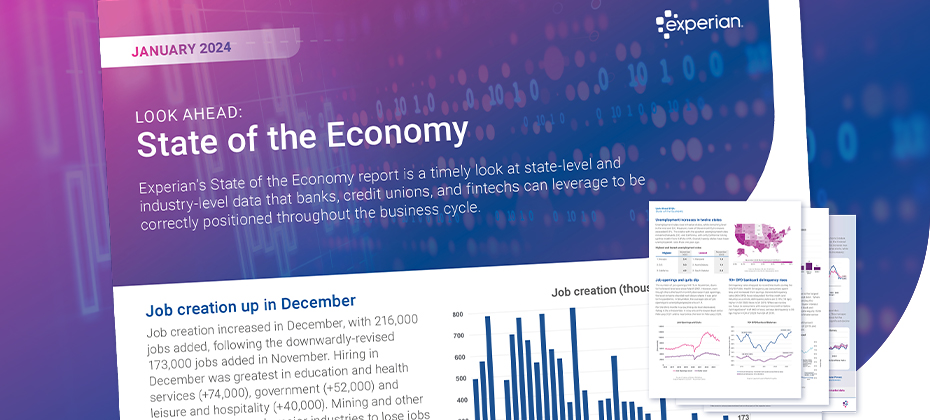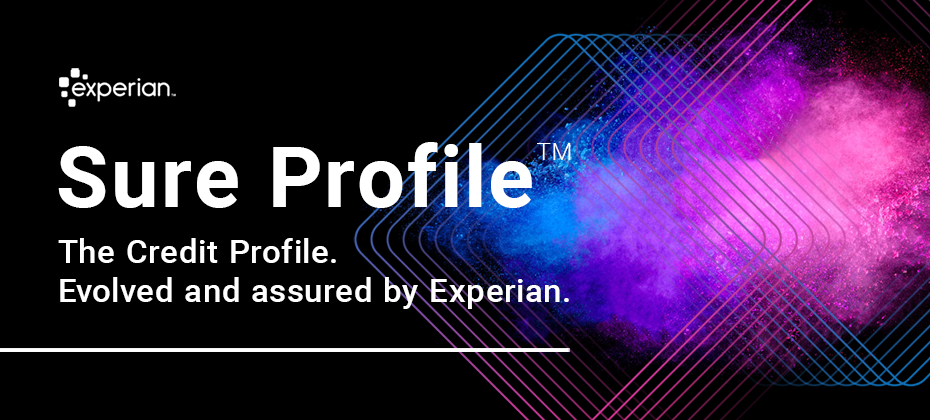Tag: credit data

Credit decisioning has traditionally relied on static data like credit bureau scores, income statements, and past repayment history. As financial behavior becomes more dynamic and consumer expectations shift toward instant decisions, real-time data is emerging as a powerful tool in reshaping how lenders assess risk.

Customer retention is crucial for lenders to maximize lifetime value, especially during economic uncertainty. Increasing customer retention rates by just 5% can boost profits by 25% to 95%. However, many lenders struggle with loyalty, as seen in Q2 2024 when mortgage servicers’ retention rates for refinances dropped to 20%, the second lowest in 17 years. Nonbanks and banks also saw significant declines. This is due to increased competition, changing economic conditions, and a lack of personalization. Key strategies for improving customer retention Lenders can improve retention by leveraging data for personalization, maintaining consistent communication, offering loyalty rewards, and utilizing retention triggers. Leverage data for personalization. Use customer data to offer tailored products and refinancing options based on financial behaviors. Using credit attributes, trended data and alternative credit data (alternative financial services data, cashflow attributes, etc.) can help provide deeper insights of your customers. Maintain consistent communication. Keep customers informed with regular updates about interest rate changes or new loan products. Use a variety of communication channels, including email and in-app messaging, to ensure customers are kept in the loop. Ensure your customer service team is always available and responsive, offering clear answers to any financial concerns. Offer loyalty rewards. Develop programs that reward repeat business and referrals. Offer special rates or discounts for returning customers or for those who refer friends and family to your services. Increase customer lifetime value (LTV) by offering additional services like financial planning or credit score monitoring. Utilize retention triggers. Identify key events for engagement with automated retention triggers. For example, a borrower who has a mortgage with a fixed rate may be less likely to consider refinancing unless prompted. Experian’s Retention TriggersSM can notify lenders when refinancing might be beneficial to their customer, offering them personalized incentives or new product options at the right time. Why Experian’s Retention Triggers? By integrating Experian’s Retention Triggers, lenders can keep borrowers engaged, increase retention, and boost profitability even in tough economic times. Advanced data insights: Gain deeper insights into your customers’ behavior to identify those at risk of leaving and take proactive action. Personalized engagement: Automate personalized communications based on customer behaviors, ensuring timely engagement. Increased revenue: By offering personalized, timely and relevant offers, you can increase the likelihood of retaining your customers and growing your revenue. Make customer retention a priority In today’s challenging economic climate, lenders who focus on personalized experiences, consistent communication, and relevant offers will stand out and retain borrowers. Leverage tools like Experian’s Retention Triggers to proactively engage customers, reduce churn, and foster long-term relationships for increased profitability and success. Learn more

This series will dive into our monthly State of the Economy report, providing a snapshot of the top monthly economic and credit data for those in financial services to proactively shape their business strategies. As we near the end of the first quarter, the U.S. economy has maintained its solid standing. We're also starting to see some easing in a few areas. This month saw a slight uptick in unemployment, slowed spending growth, and a slight increase in annual headline inflation. At the same time, job creation was robust, incomes continued to grow, and annual core inflation cooled. In light of the mixed economic landscape, this month’s upcoming Federal Reserve meeting and their refreshed Summary of Economic Projections should shine some light on what’s in store in the coming months. Data highlights from this month’s report include: Annual headline inflation increased from 3.1% to 3.2%, while annual core inflation cooled from 3.9% to 3.8%. Job creation remained solid, with 275,000 jobs added this month. Unemployment increased to 3.9% from 3.7% three months prior. Mortgage delinquencies rose for accounts (2.3%) and balances (1.8%) in February, contributing to overall delinquencies across product types. Check out our report for a deep dive into the rest of March’s data, including consumer spending, the housing market, and originations. To have a holistic view of our current environment, we must understand our economic past, present, and future. Check out our annual chartbook for a comprehensive view of the past year and download our latest forecasting report for a look at the year ahead. Download March's State of the Economy report Download latest forecast For more economic trends and market insights, visit Experian Edge.

This series will dive into our monthly State of the Economy report, providing a snapshot of the top monthly economic and credit data for those in financial services to proactively shape their business strategies. In February, economic growth and job creation outperformed economists’ expectations, likely giving confirmation to the Federal Reserve that it remains too early to begin cutting rates. Data highlights from this month’s report include: U.S. real GDP rose 3.3% in Q4 2023, driven by consumer spending and bringing the average annual 2023 growth to 2.5%, the same as the five-year average growth prior to the pandemic. The labor market maintained its strength, with 353,000 jobs added this month and unemployment holding at 3.7% for the third month in a row. Consumer sentiment rose 13% in January, following a 14% increase in December, as consumers are feeling some relief from cooling inflation. Check out our report for a deep dive into the rest of February’s data, including inflation, the latest Federal Reserve announcement, the housing market, and credit card balances. To have a holistic view of our current environment, we must understand our economic past, present, and future. Check out our annual chartbook for a comprehensive view of the past year and register for our upcoming Macroeconomic Forecasting webinar for a look at the year ahead. Download report Register for webinar For more economic trends and market insights, visit Experian Edge.

This series will dive into our monthly State of the Economy report, providing a snapshot of the top monthly economic and credit data for those in financial services to proactively shape their business strategies. As 2024 unfolds, the economy is beginning to shift from last year’s trends. Instead of focusing on rate hikes, we’re looking at the potential for rate cuts. Our labor market is beginning to ease, and inflation is moving closer to the Federal Reserve’s 2% mark. Each month’s data gives us a clearer picture of our economic trajectory and the Federal Reserve’s (Fed) policy moving forward, as well as new and direct implications on credit metrics. Data highlights from this month’s report include: The U.S. economy added 216,000 jobs in December, but after November and October levels were revised, three-month average job creation now sits below the pre-pandemic level. While there was no change in November, annual core inflation, which excludes the volatile food and energy components, cooled in December from 4.0% to 3.9%. Consumer sentiment rose 14% in December, reversing the past four monthly declines, driven by increased optimism toward the trajectory of inflation. Check out our report for a deep dive into the rest of this month’s data, including student loans, consumer spending, the housing market, and delinquencies. To have a holistic view of our current environment, we must understand our economic past, present, and future. Keep an eye out for this year’s chartbook for a comprehensive view of the past year and download our latest forecast for a view of what’s to come. Download report View forecast For more economic trends and market insights, visit Experian Edge.

Today’s changing economy is directly impacting consumers’ financial behaviors, with some individuals doing well and some showing signs of payment stress. And while these trends may pose challenges to financial institutions, such as how to expand their customer base without taking on additional risk, the right credit attributes can help them drive smarter and more profitable lending decisions. With Experian’s industry-leading credit attributes, organizations can develop precise and explainable acquisition models and strategies. As a result, they can: Expand into new segments: By gaining deeper insights into consumer trends and behaviors, organizations can better assess an individual’s creditworthiness and approve populations who might have been overlooked due to limited or no credit history. Improve the customer experience: Having a wider view of consumer credit behavior and patterns allows organizations to apply the best treatment at the right time based on each consumer’s specific needs. Save time and resources: With an ongoing managed set of base attributes, organizations don’t have to invest significant resources to develop the attributes themselves. Additionally, existing attributes are regularly updated and new attributes are added to keep pace with industry and regulatory changes. Case study: Enhance decision-making and segmentation strategies A large retail credit card issuer was looking to grow their portfolio by identifying and engaging more consumers who met their credit criteria. To do this, they needed to replace their existing custom acquisition model with one that provided a granular view of consumer behavior. By partnering with Experian, the company was able to implement an advanced custom acquisition model powered by our proprietary Trended 3DTM and Premier AttributesSM. Trended 3D analyzes consumers’ behavior patterns over time, while Premier Attributes aggregates and summarizes findings from credit report data, enabling the company to make faster and more strategic lending decisions. Validations of the new model showed up to 10 percent improvement in performance across all segments, helping the company design more effective segmentation strategies, lower their risk exposure and approve more accounts. To learn how Experian can help your organization make the best data-driven decisions, read the full case study or visit us. Download case study Visit us

For decades, the credit scoring system has relied on traditional data that only examines existing credit captured on a credit report – such as credit utilization ratio or payment history – to calculate credit scores. But there's a problem with that approach: it leaves out a lot of consumer activity. Indeed, research shows that an estimated 28 million U.S. adults are “credit invisible," while another 21 million are “unscorable."1 But times are changing. While conventional credit scoring systems cannot generate a score for 19 percent of American adults,1 many lenders are proactively turning to expanded FCRA-regulated data – or "alternative data" – for solutions. Types of expanded FCRA-regulated data By tapping into technology, lenders can access expanded FCRA-regulated data, which offers a powerful and complete view of consumers' financial situations. Expanded public record data This can include professional and occupational licenses, property deeds and address history – a step beyond the limited public records information found in standard credit reports. Such expanded public record data is available through consumer reporting agencies and does not require the customer's permission to use it since it's a public record.1 “Experian has partnerships with these agencies and can access public records that provide insight into factors like income and housing stability, which have a direct correlation with how they'll perform," said Greg Wright, Chief Product Officer for Experian Consumer Information Services. “For example, lenders can see if a consumer's professional license is in good standing, which is a strong correlation to income stability and the ability to pay back a loan." Rental payment data Experian RentBureau draws updated rental payment history data every 24 hours from property managers, electronic rent payment services and collection companies. It can also track the frequency of address changes. “Such information can be a good indicator of risk," said Wright. “It allows lenders to make informed judgments about the financial health and positive payment history of consumers." Consumer-permissioned data With permission from consumers, lenders can look at different types of financial transactions to assess creditworthiness. Experian Boost™, for example, enables consumers to factor positive payment history, such as utilities, cell phone or even streaming services, into an Experian credit file. “Using the Experian Boost is free, and for most users, it instantly improves their credit scores," said Wright. “Overall, those 'boosted' credit scores allow for fairer decisioning and better terms from lenders – which gives customers a second chance or opportunity to receive better terms." Financial Management Insights Financial Management Insights considers data that is not captured by the traditional credit report such as cash flow and account transactions. For instance, this could include demand deposit account (DDA) data, like recurring payroll deposits, or prepaid account transactions. “Examining bank account transaction data, prepaid accounts, and cash flow data can be a good indicator of ability to pay as it helps verify income, which gives lenders insights into consumers' cash flow and ability to pay," Wright added. Clarity Credit Data With Experian's Clarity Credit Data, lenders can see how consumers use expanded FCRA-regulated data along with their related payment behavior. It provides visibility into critical non-traditional loan information, including more insights into thin-file and no-file segments allowing for a more comprehensive view of a consumer's credit history. Lift Premium™ By using multiple sources of expanded FCRA-regulated data to feed composite scores, along with artificial intelligence and machine learning, Lift Premium™ can vastly increase the number of consumers who can be scored. For example, research shows that Lift Premium™ can score 96 percent of American adults – a significant increase from the 81 percent that are scorable with conventional scores relying on only traditional credit data. Additionally, such enhanced composite scores could enable 6 million of today's subprime population to qualify for “mainstream" (prime or near-prime) credit.1 How is expanded FCRA-regulated data changing the credit scoring system? The current credit scoring system is rapidly evolving, and modern technology is making it easier for lenders to access expanded FCRA-regulated data. Indeed, this data disruption is changing lender business in a positive way. “When lenders use expanded credit data assets, they see that many unscorable and credit invisible consumers are in fact creditworthy," said Wright. “Layering in expanded FCRA-regulated data gives a clearer picture of consumers' financial situation." By expanding data assets, tapping into artificial intelligence and machine learning, lenders can now score many more consumers quickly and accurately. Moreover, forward-thinking lenders see these expanded data assets as offering a competitive edge: it's estimated that modern credit scoring methods could allow lenders to grow their pool of new customers by almost 20 percent.1 Case study: Consumer-permissioned data To date, over 9 million people have used Experian Boost. The technology uses positive payment history as a way to recognize customers who exhibit strong credit behaviors outside of traditional credit products. “Boosted" consumers were able to add on average 14 points to their FICO scores in 2022 so far, making many eligible for additional financial products with better terms or better product offerings. Active Boost consumers, post new origination performed on par or better than the average U.S. originator, consistently over time. “In other words, having this additional lens into a consumer's financial health means lenders can expand their customer base without taking on additional credit risk," explains Wright. The bottom line The world of credit data is undergoing a revolution, and forward-thinking lenders can build a sound business strategy by extending credit to consumers previously excluded from it. This not only creates a more equitable system, but also expands the customer base for proactive lenders who see its potential in growing business. Learn more 1Oliver Wyman white paper, “Financial Inclusion and Access to Credit,” January 12, 2022.

At Experian, we know that financial institutions, fintechs and lenders across the entire spectrum – small, medium and large, are further exploring and adopting AI-powered solutions to unlock growth and improve operational efficiencies. With increasing competition and a dynamic economy, AI-driven strategies across the entire customer lifecycle are no longer a nice to have, they are a must. Our dedication to delivering on this need for our clients is why we are thrilled to be recognized as a Fintech Breakthrough Award winner for the fifth consecutive year. Experian’s Ascend Intelligence ServicesTM (AIS) platform hosts a suite of analytics solutions and has been named “Best Consumer Lending Product” in the sixth annual FinTech Breakthrough Awards. This awards program is conducted by FinTech Breakthrough, an independent market intelligence organization that recognizes the top companies, technologies and products in the global fintech market today. This is the second consecutive year that AIS has been recognized with a FinTech Breakthrough Award, previously being selected for the “Consumer Lending Innovation Award” in 2021. “Winning another award from FinTech Breakthrough is a fantastic validation of the success and momentum of our Ascend Intelligence Services suite. Now more than ever, the world is in a state of constant change and companies are being reactive, with data scientists spending too much time on manual, repetitive data-wrangling tasks, at a time when they cannot afford to do so,” said Shri Santhanam, Experian’s executive vice president and general manager of Global Analytics and AI. “Companies need to be able to rapidly develop and deploy ML-powered models in an agile way at low cost. We are now able to offer this to more lenders no matter their size.” With AIS, Experian can empower financial services firms to make the best decisions across the customer life cycle with rapid model and strategy build, seamless deployment, optimization and continuous monitoring. The AIS suite is comprised of two key solution models: Ascend Intelligence Services Acquire is a managed services offering that enables financial institutions to increase approval rates and control bad debt by acquiring the right customers and providing the best offers. This is accomplished through a rapid AI/ML model build that will help better quantify the risk of an individual applicant. Next, a mathematically optimized decision strategy is designed to provide a more granular view of the applicant and help make the best decision possible based on the institution’s specific business goals and constraints. The combination of the AI/ML model and optimized decision strategy provides increased predictive power that mitigates risk and allows more automated decisions to be made. The model and strategy are seamlessly deployed to help deliver business value quickly. Ascend Intelligence Services™ Limit enables financial institutions to make the right credit limit decisions at account origination and during account management. Limit uses Experian’s data, predictive risk and balance models and our powerful optimization engine to design the right credit limit strategy that maximizes product usage, while keeping losses low. To learn more about how Ascend Intelligence Services can support your business, please explore our solutions page. Learn more For a list of all award winners selected for the 2022 FinTech Breakthrough Awards, click here.

Lately, I’ve been surprised by the emphasis that some fraud prevention practitioners still place on manual fraud reviews and treatment. With the market’s intense focus on real-time decisions and customer experience, it seems that fraud processing isn’t always keeping up with the trends. I’ve been involved in several lively discussions on this topic. On one side of the argument sit the analytical experts who are incredibly good at distilling mountains of detailed information into the most accurate fraud risk prediction possible. Their work is intended to relieve users from the burden of scrutinizing all of that data. On the other side of the argument sits the human side of the debate. Their position is that only a human being is able to balance the complexity of judging risk with the sensitivity of handling a potential customer. All of this has led me to consider the pros and cons of manual fraud reviews. The Pros of Manual Review When we consider the requirements for review, it certainly seems that there could be a strong case for using a manual process rather than artificial intelligence. Human beings can bring knowledge and experience that is outside of the data that an analytical decision can see. Knowing what type of product or service the customer is asking for and whether or not it’s attractive to criminals leaps to mind. Or perhaps the customer is part of a small community where they’re known to the institution through other types of relationships—like a credit union with a community- or employer-based field of membership. In cases like these, there are valuable insights that come from the reviewer’s knowledge of the world outside of the data that’s available for analytics. The Cons of Manual Review When we look at the cons of manual fraud review, there’s a lot to consider. First, the costs can be high. This goes beyond the dollars paid to people who handle the review to the good customers that are lost because of delays and friction that occurs as part of the review process. In a past webinar, we asked approximately 150 practitioners how often an application flagged for identity discrepancies resulted in that application being abandoned. Half of the audience indicated that more than 50% of those customers were lost. Another 30% didn’t know what the impact was. Those potentially good customers were lost because the manual review process took too long. Additionally, the results are subjective. Two reviewers with different levels of skill and expertise could look at the same information and choose a different course of action or make a different decision. A single reviewer can be inconsistent, too—especially if they’re expected to meet productivity measures. Finally, manual fraud review doesn’t support policy development. In another webinar earlier this year, a fraud prevention practitioner mentioned that her organization’s past reliance on manual review left them unable to review fraud cases and figure out how the criminals were able to succeed. Her organization simply couldn’t recreate the reviewer’s thought process and find the mistake that lead to a fraud loss. To Review or Not to Review? With compelling arguments on both sides, what is the best practice for manually reviewing cases of fraud risk? Hopefully, the following list will help: DO: Get comfortable with what analytics tell you. Analytics divide events into groups that share a measurable level of fraud risk. Use the analytics to define different tiers of risk and assign each tier to a set of next steps. Start simple, breaking the accounts that need scrutiny into high, medium and low risk groups. Perhaps the high risk group includes one instance of fraud out of every five cases. Have a plan for how these will be handled. You might require additional identity documentation that would be hard for a criminal to falsify or some other action. Another group might include one instance in every 20 cases. A less burdensome treatment can be used here – like a one-time-passcode (OTP) sent to a confirmed mobile number. Any cases that remain unverified might then be asked for the same verification you used on the high-risk group. DON’T: Rely on a single analytical score threshold or risk indicator to create one giant pile of work that has to be sorted out manually. This approach usually results in a poor experience for a large number of customers, and a strong possibility that the next steps are not aligned to the level of risk. DO: Reserve manual review for situations where the reviewer can bring some new information or knowledge to the cases they review. DON’T: Use the same underlying data that generated the analytics as the basis of a review. Consider two simplistic cases that use a new address with no past association to the individual. In one case, there are several other people with different surnames that have recently been using the same address. In the other, there are only two, and they share the same surname. In the best possible case, the reviewer recognizes how the other information affects the risk, and they duplicate what the analytics have already done – flagging the first application as suspicious. In other cases, connections will be missed, resulting in a costly mistake. In real situations, automated reviews are able to compare each piece of information to thousands of others, making it more likely that second-guessing the analytics using the same data will be problematic. DO: Focus your most experienced and talented reviewers on creating fraud strategies. The best way to use their time and skill is to create a cycle where risk groups are defined (using analytics), a verification treatment is prescribed and used consistently, and the results are measured. With this approach, the outcome of every case is the result of deliberate action. When fraud occurs, it’s either because the case was miscategorized and received treatment that was too easy to discourage the criminal—or it was categorized correctly and the treatment wasn’t challenging enough. Gaining Value While there is a middle ground where manual review and skill can be a force-multiplier for strong analytics, my sense is that many organizations aren’t getting the best value from their most talented fraud practitioners. To improve this, businesses can start by understanding how analytics can help group customers based on levels of risk—not just one group but a few—where the number of good vs. fraudulent cases are understood. Decide how you want to handle each of those groups and reserve challenging treatments for the riskiest groups while applying easier treatments when the number of good customers per fraud attempt is very high. Set up a consistent waterfall process where customers either successfully verify, cascade to a more challenging treatment, or abandon the process. Focus your manual efforts on monitoring the process you’ve put in place. Start collecting data that shows you how both good and bad cases flow through the process. Know what types of challenges the bad guys are outsmarting so you can route them to challenges that they won’t beat so easily. Most importantly, have a plan and be consistent. Be sure to keep an eye out for a new post where we’ll talk about how this analytical approach can also help you grow your business. Contact us

The tax gap—the difference between what taxpayers should pay and what they actually pay on time—can have a substantial impact on states’ budgets. Tax agencies and other state departments are responsible for helping states manage their budgets by minimizing expected revenue shortfalls. Underreported income is a significant budget complication that continues to frustrate even the most effective tax agencies, until the right tools are brought into play. The Problem Underreporting is a large, complex issue for agencies. The IRS currently estimates the annual tax gap at $441 billion. There are multiple factors that comprise that total, but the most prevalent is underreporting, which represents 80% of the total tax gap. Of that, 54% is due to underreporting of individual income tax. In addition to being the largest contributor to the tax gap, underreporting is also extremely challenging to identify out of the millions of returns being filed. With 85% of taxes owed correctly reported and paid, finding underreporting can be like trying to locate a needle in the proverbial haystack. Making this even more challenging is the limited resources available for auditing returns, which makes efficiency key. The Solution Data, combined with artificial intelligence (AI) equals efficient detection. The problem with trying to detect which returns are most likely to have underreported income is similar to many other challenges Experian has solved with AI. Partnerships between Experian and state agencies combine what we know about consumers with what their agency knows about their population. We can take the data and use AI to separate the signal from the noise, finding opportunities to recoup lost revenue. Read our case study on how Experian was able to help an agency identify instances of underreporting, detecting an estimated $80 million annual lost revenue from underreported income. Download case study Contact us

Experian recently announced its expansion into Employer Services and the release of a new suite of real-time income and employment verification products, Experian Verify™. The COVID-19 pandemic amplified lenders' need for deeper insights into a consumer's financial situation. At the same time, employers were flooded with record-breaking unemployment claims, while managing stay-at-home orders, income and employment verification fulfillment requests, and more. "We're committed to helping employers, businesses, lenders, and consumers on the road to recovery from the pandemic and beyond," said Alex Lintner, Group President Experian Consumer Information Services. "To support this, we're building two businesses: Experian Employer Services and Verification Solutions. These businesses will create meaningful change and provide our clients with competitive options to achieve their verification needs while helping improve access to credit for consumers." With Experian Verify, lenders can quickly and easily create a more complete picture of a consumer's financial situation by verifying an applicant's income and employment status. Powered by our growing network of payroll and proprietary employer data, Experian Verify offers lenders flexible and secure access to income and employment records. With a consumer's consent, lenders can request the information from Experian and an income and employment report can be delivered to lenders through an API, online Experian dashboard, or paired with an Experian credit report. "As we begin to recover from the COVID-19 pandemic and employers are reopening their doors, we're confident we have assembled the best-of-the-best to help employers overcome their toughest challenges. We're committed to leveraging our combined capabilities and focus on high-touch customer service to deliver secure, scalable and transparent services to employers," said Michele Bodda, President of Experian Mortgage, Employer Services and Verification solutions. Visit us for more information on Experian Verify and Experian's Employer Services. Contact us

To combat the growing threat of synthetic identity fraud, Experian recently announced the launch of Sure ProfileTM, a revolutionary change to the credit profile that gives lenders peace of mind with Experian’s commitment to share in losses that result from an identity we’ve assured. “Experian has always been a leader in combatting fraud, and with Sure Profile, we’re proud to deliver an industry-first fraud offering integrated into the credit profile that mitigates lender losses while protecting millions of consumers’ identities,” said Robert Boxberger, President of Decision Analytics, Experian North America. Synthetic identity fraud is expected to drive $48 billion in annual online payment fraud losses by 2023. Between opportunistic fraudsters and a lack of a unified definition for synthetic identity theft it can be nearly impossible to detect—and therefore prevent—this type of fraud. This breakthrough solution provides a composite history of a consumer’s identification, public record, and credit information and determines the risk of synthetic fraud associated with that consumer. It’s not just a fraud tool, it’s a comprehensive credit profile that utilizes premium data so lenders can make positive credit decisions. Sure Profile leverages the capabilities of the Experian Ascend Identity PlatformTM and uses Experian’s industry-leading data assets and data quality to drive advanced analytics that set a higher level of protection for lenders. It’s powered by newly-developed machine learning and AI models. And it offers a streamlined approach to define and detect synthetic identities early in the originations process. Most importantly, Sure Profile differentiates between real people and potentially risky applicants so lenders can increase application approvals with greater assurance and less risk. “Experian can confidently define and help detect synthetic fraud. That's why we can help stop it,” said Craig Boundy, CEO of Experian North America. “Experian stands behind our data with assurance given to our clients. It’s better for lenders and it’s better for consumers.” Sure Profile is a complement to our robust set of identity protection and fraud management capabilities, which are designed to address fraud and identity challenges including account openings, account takeovers, e-commerce fraud and more. This first-of-its kind profile is the future of underwriting and portfolio protection and it’s here now. Read press release Learn More About Sure Profile

The economic impact of the COVID-19 health crisis is ever-evolving and requires great flexibility and planning from lenders. Shannon Lois, Experian’s Senior Vice President, Analytics, Consulting and Operations, discusses what lenders can expect and next steps to take. Q: Though COVID-19 is catalyzing a sharp economic slowdown, many experts expect it to be temporary and liken it more to a global natural disaster than the prior financial crisis. What are your reactions? SL: There is still debate as to whether we will have a U-shaped or a V-shaped recession and its probable severity and longevity. Regardless, we are in a recession caused by a health pandemic with uncertainty of what it will mean for our global economy and without a clear view as to when it will end. The sooner we can contain the virus the more it will help to curtail the size of the recession. The unemployment rates and the consumer lack of confidence in the future will continue to contract spending which in turn will continue to propagate the recession. Our ability to limit COVID-19 over the coming months will have a direct impact in the economy, although the effects will probably linger on for six or more months. Q: From an economic perspective, what are the current trends we’re seeing? SL: Unemployment has skyrocketed and every business sector has been impacted although with different degrees of severity. In particular, tourism/hospitality, airlines, automotive, consumer products and retail have suffered. Consumers’ financial status varies and will continue to fluctuate, and credit conditions tighten while welfare payments increase. The government programs that have started will help, but they’re not enough to counter a prolonged recession. As some states seek to reopen and others extend their shelter in place orders, we will continue to see economic changes, with different sectors bouncing back or dipping further depending on their geographic location. Q: How does the economic slowdown compare to what we may have expected previously? SL: This recession is different than anything we have encountered previously not only because of the health concerns and implication of our population but because of the uncertainty of it all. As an example, social distancing has significantly and immediately impacted consumer demand but overall it is their low confidence in the future that will cause a continuous drop in discretionary and non-discretionary spending. Not only do we have challenges on the demand side, we also are seeing the same on the supply side with no automotive manufacturing occurring in the USA, and international oil flooding the market causing negative impact on domestic oil and the broad energy market. Q: How do the unemployment and liquidity challenges come into play? SL: The unemployment rate has already jumped to a record high. Most consumers are facing liquidity and affordability challenges and businesses do not have enough cash reserves to sustain them. Consumer activity has shifted drastically across all channels while lenders are exercising more caution. If this is a V-shaped recession (and hopefully it will be), then most activity is bound to spring back quickly in Q3. With companies safeguarding some jobs and the help of governments’ supplemental programs, businesses will restore supply and consumer demand will get a kick start. Q: What is the smartest next play for financial institutions? SL: The path forward requires several steps. First, understand your customers, existing and new. Refine your policies with the right information around your customers’ financial situations and extend programs (forbearance and loan payment forgiveness) as needed under the right guidelines. It’s also important to use refreshed data to lend to consumers and businesses who need it now more than ever, with the proper policies and fraud checks in place. Finally, increase your agility to operate effectively and dynamically with automation, interactive communication and self-serving digital tools. Experian is committed to helping lenders throughout these uncertain times. For more resources, visit our Look Ahead 2020 Resource Hub. Learn more About Our Expert Shannon Lois, Senior Vice President, Analytics, Consulting and Operations, Decision Analytics Shannon and her team of analysts, scientists, credit, fraud and marketing risk management experts provide results-driven consulting services and state-of-the-art advanced analytics, science and data products to clients in a wide range of businesses, including banking, auto, credit, utility, marketing and finance. Prior to her current role, she founded the Advisory Services practice at Experian, driving to actionable and proven solutions for our clients’ most pressing business problems.

When running a credit report on a new applicant, you must ensure Fair Credit Reporting Act (FCRA) compliance before accessing, using and sharing the collected data. The Coronavirus Aid, Relief, and Economic Security (CARES) Act has impacted credit reporting under the FCRA, as has new guidance from the Consumer Financial Protection Bureau (CFPB). Recent updates include: The CARES Act amended the FCRA to require furnishers who agree to an “accommodation,”1 to report the account as current, although it is permitted to continue to report the account as delinquent if the account was delinquent before the accommodation was made. Although not legally obligated, data furnishers should continue furnishing information to the credit reporting agencies (CRAs) during the COVID-19 crisis, and make sure that information reported is complete and accurate. Below is a brief FCRA-related compliance overview2 covering various FCRA requirements3 when requesting and using consumer credit reports for an extension of credit permissible purpose. For more information regarding your responsibilities under the FCRA as a user of consumer reports, please consult your Legal Counsel and the Notice to Users of Consumer Reports: Obligations of Users Under the FCRA handbook located on our website. Before obtaining a consumer report you have… Reviewed your federal and state regulations and laws related to consumer reports, scores, decisions, etc. Made sure you have a valid permissible purpose for pulling the consumer report. Certified compliance to the CRA from which you are getting the consumer report. You have certified that you complied with all the federal and state requirements. After you take an adverse action based on a consumer report you… Provide the consumer with an oral, written or electronic notice of the adverse action. Provide written or electronic disclosure of the numerical credit score used to take the adverse action, or when providing a “risk-based pricing” notice. Provide the consumer with an oral, written or electronic notice, which includes the below information: Name, address and telephone number of CRA that supplied the report, if nationwide. A statement that the CRA did not make the adverse decision and therefore can’t explain why the decision was made. Notice of the consumer’s right to a free copy of their report from the CRA, if requested within 60 days. Notice of the consumer’s right to dispute with the CRA the accuracy or completeness of any information in a consumer report provided by the CRA. Provide the consumer with a “risk-based pricing” notice if credit was granted but on less favorable terms based on information in their consumer report. We understand how challenging it is to understand and meet all your obligations as a data furnisher – we’re here to make it a little easier. Click below to speak with a representative and gain more insight on how the CARES Act impacts FCRA reporting. Download overview Speak with a representative 1An “accommodation” is defined as “an agreement to defer one or more payments, make a partial payment, forbear any delinquent amounts, modify a loan or contract, or any other assistance or relief” granted to a consumer affected by COVID-19 during the covered period. 2This FCRA overview is not legal guidance and does not enumerate all your requirements under the FCRA as a user of consumer reports. Additionally, this FCRA Overview is not intended to provide legal advice or counsel you regarding your obligations under the FCRA or any other federal or state law or regulation. Should you have any questions about your institution’s specific obligations under the FCRA or any other federal or state law or regulation, you should consult with your Legal Counsel. 3This FCRA overview is intended to be used solely by financial service providers when extending credit to consumers and does not include all FCRA regulatory obligations. You are responsible for regulatory compliance when requesting and using consumer reports, which includes adhering to all applicable federal and state statutes and regulations and ensuring that you have the correct policies and procedures in place.

Article written by Alex Lintner, Experian's Group President of Consumer Information Services and Sandy Anderson, Experian's Senior Vice President of Client and Sales Operations Many consumers are facing financial stress due to unemployment and other hardships related to the COVID-19 pandemic. Not surprisingly, data scientists at Experian are looking into how consumers’ credit scores may be impacted during the COVID-19 national emergency period as financial institutions and credit bureaus follow guidance from financial regulators and law established in Section 4021 of the Coronavirus Aid, Relief, and Economic Security Act (CARES Act). In a nutshell, Experian finds that if consumers contact their lenders and are granted an accommodation, such as a payment holiday or forbearance, and lenders report the accommodation accordingly, consumer scores will not be materially affected negatively. It’s not just Experian’s findings, but also those of the major credit scoring companies, FICO® and VantageScore®. FICO has reported that if a lender provides an accommodation and payments are reported on time consistent with the CARES Act, consumers will not be negatively impacted by late payments related to COVID-19. VantageScore® has also addressed this issue and stated that its models are designed to mitigate the impact of missed payments from COVID-19. At the same time, if as predicted, lenders tighten underwriting standards following 11 consecutive years of economic growth, access to credit for some consumers may be curtailed notwithstanding their score because their ability to repay the loan may be diminished. Regulatory guidance and law provide a robust response Recently, the Federal Reserve, along with the federal and state banking regulators, issued a statement encouraging mortgage servicers to work with struggling homeowners affected by the COVID-19 national emergency by allowing borrowers to defer mortgage payments up to 180-days or longer. The Federal Deposit Insurance Corporation stated that financial institutions should “take prudent steps to assist customers and communities affected by COVID-19.” The Office of the Comptroller of the Currency, which regulates nationally chartered banks, encouraged banks to offer consumers payment accommodations to avoid delinquencies and negative credit bureau reporting. This regulatory guidance was backed by Congress in passing the CARES Act, which requires any payment accommodations to be reported to a credit bureau as “current.” The Consumer Financial Protection Bureau, which has oversight of all financial service providers, reinforced the regulatory obligation in the CARES Act. In a statement, the Bureau said “the continuation of reporting such accurate payment information produces substantial benefits for consumers, users of consumer reports and the economy as a whole.” Moreover, the consumer reporting industry has a history of successful coordination during emergency circumstances, like COVID-19, and we’ve provided the support necessary for lenders to report accurately and consistent with regulatory guidance. For example, when a consumer faces hardship, a lender can add a code that indicates a customer or borrower has been “affected by natural or declared disaster.” If a lender uses this or a similar code, a notification about the disaster or other event will appear in the credit report with the trade line for the customer’s account and will remain on the trade line until the lender removes it. As a result, the presence of the code will not negatively impact the consumer credit score. However, other factors may impact a consumer’s score, such as an increase in a consumer’s utilization of their credit lines, which is a likely scenario during a period of financial stress. Suppression or Deletion of late payments will hurt, not help, credit scores In response to the nationwide impact of COVID-19, some lawmakers have suggested that lenders should not report missed payments or that credit bureaus should delete them. The presumption is that these actions would hold consumers harmless during the crisis caused by this pandemic. However, these good intentions end up having a detrimental impact on the whole credit ecosystem as consumer credit information is no longer accurately reflecting consumers’ specific situation. This makes it difficult for lenders to assess risk and for consumers to obtain appropriately priced credit. Ultimately, the best way to help is a consumer-specific solution, meaning one in which a lender reaches an accommodation with each affected individual, and accurately reflects that person’s unique situation when reporting to credit bureaus. When a consumer misses a payment, the information doesn’t end up on a credit report immediately. Most payments are monthly, so a consumer’s payment history with a financial institution is updated on a similar timeline. If, for example, a lender was required to suppress reporting for three months during the COVID-19 national emergency, the result would be no data flowing onto a credit report for three months. A credit report would therefore show monthly payments and then three months of no updates. The same would be true if a credit reporting agency were required to suppress or delete payment information. The lack of data, due to suppression or deletion, means that lenders would be blinded when making credit decisions, for example to increase a credit limit to an existing customer or to grant a new line of credit to a prospective customer. When faced with a blind spot, and unable to assess the real risk of a consumer’s credit history, the prudential tendency would be to raise the cost of credit, or to decrease the availability of credit, to cover the risk that cannot be measured. This could effectively end granting of credit to new customers, further stifling economic recovery and consumer financial health at a time when it’s needed most. Beyond the direct impact on consumers, suppression or deletion of credit information could directly affect the safety and soundness of the nation’s consumer and small business lending system. With missing data, lenders and their regulators would be flying blind as to the accurate information about a consumer’s risk and could result in unknowingly holding loan portfolios with heightened risk for loss. Too many unexpected losses threaten the balance of the financial system and could further seize credit markets. Experian is committed to helping consumers manage their credit and working with lenders on how best to report consumer-specific solutions. To learn more about what consumers can do to manage credit during the COVID-19 national emergency, we’ve provided resources on our website. For individuals looking to explore options their lenders may offer, we’ve included links to many of the companies and update them continuously. With good public policy and consumer-specific solutions, consumers can continue to build credit and help our economy grow.